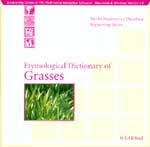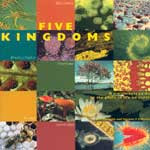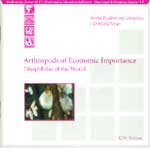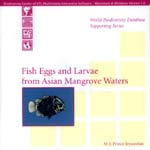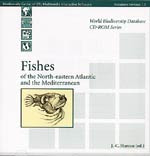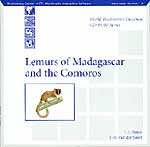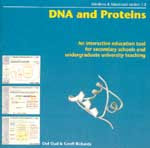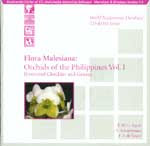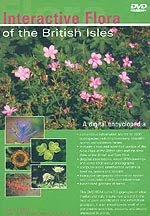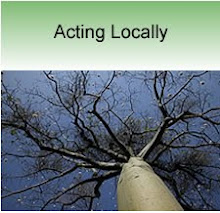Last week, the Committee on World Food Security met in Rome, its first session since it was reformed in light of the 2008 food crisis The UN-led meeting brought together 123 governmental delegates, 46 international non-governmental organizations (NGOs), and 11 international agencies to identify ways to combat global hunger and malnutrition.
Land use protection essential in fight against hunger, UN expert warns
About Me

- WERI FOUNDATION
- Ensure inclusive and equitable quality education and promote lifelong learning opportunities for all
Mr.Vladimir Putin Vladimirovich is the Prime Minister of the Russian Federation
Uploads by WERICAMPAIGN
Followers
BBC News - Science & Environment
2010-10-18
2010-10-15
OtherWords: Farm-to-School's Teachable Moment
Farm-to-School's Teachable Moment
Teaching the value of healthy eating in schools is a great way to fight obesity.
By JoAnne Berkenkamp
Schools throughout the country are shaking up the cafeteria through new initiatives to improve children's health while giving a boost to local farmers. It's time to give the mystery meat a break and bring out locally produced apples, squash, tomatoes, and chicken.
You'd think that a program linking local farmers producing fresh, minimally processed foods with local schools would be a no-brainer. But several decades of federal farm programs have discouraged farmers from targeting local markets--instead encouraging farmers to expand acreage with a few commodity program crops (like corn, soybeans, or wheat) or get out of farming all together. At the same time, school lunch programs dealing with tight budgets have taken advantage of more highly processed foods over buying fresh from local farmers. Read More
OtherWords: Farm-to-School's Teachable Moment
Teaching the value of healthy eating in schools is a great way to fight obesity.
By JoAnne Berkenkamp
Schools throughout the country are shaking up the cafeteria through new initiatives to improve children's health while giving a boost to local farmers. It's time to give the mystery meat a break and bring out locally produced apples, squash, tomatoes, and chicken.
You'd think that a program linking local farmers producing fresh, minimally processed foods with local schools would be a no-brainer. But several decades of federal farm programs have discouraged farmers from targeting local markets--instead encouraging farmers to expand acreage with a few commodity program crops (like corn, soybeans, or wheat) or get out of farming all together. At the same time, school lunch programs dealing with tight budgets have taken advantage of more highly processed foods over buying fresh from local farmers. Read More
OtherWords: Farm-to-School's Teachable Moment
2010-10-14
Television meet Internet
"SALT"
Welcome to the Official Facebook Page for Sony Corporation of America.
Believe that anything you can imagine, you can make real.
About Sony:
Sony is a leading manufacturer of audio, video, communications, and information technology products for the consumer and professional markets. Its motion picture, television, computer entertainment, music and online businesses make Sony one of the most comprehensive entertainment and technology companies in the world.
Mission: About Sony make.believe:
make.believe is the Sony Group Brand Message.
make.believe stands for the power of your creativity, your ability to turn ideas into reality and the belief that anything you can imagine, you can make real.
2010-10-13
Constellation Energy
Constellation Energy (www.constellation.com) is a leading supplier of energy products and services to wholesale and retail electric and natural gas customers. It owns a diversified fleet of generating units located in the United States and Canada, totaling approximately 9,000 megawatts of generating capacity, and is among the leaders pursuing the development of new nuclear plants in the United States. The company delivers electricity and natural gas through the Baltimore Gas and Electric Company (BGE), its regulated utility in Central Maryland. A FORTUNE 500 company headquartered in Baltimore, Constellation Energy had revenues of $15.6 billion in 2009.
Shareholder Services - 1-800-258-0499
Corporate Communications - communications@constellation.com
Human Resources - careers@constellation.com
Investor Relations - 410-470-6440 InvestorRelations@constellation.com
Media Inquiries - 410-470-7433 media@constellation.com
Web site questions/comments - webmaster@constellation.com
Follow Constellation Energy on Twitter.
Watch the latest ConstellationEG videos on YouTube.
Corporate Headquarters
Constellation Energy
100 Constellation Way
Baltimore, MD 21202
410-470-2800
Competitive Energy Supply
Constellation Energy Commodities Group (CECG)
111 Market Place
Suite 500
Baltimore, MD 21202
410-470-3500
Constellation NewEnergy (CNE)
100 Constellation Way
Suite 1200C
Baltimore, MD 21202
866-237-7693
www.newenergy.com
Constellation NewEnergy - Gas Division
9960 Corporate Campus Drive
Suite 2000
Louisville, KY 40223
502-426-4500 (Contact: Erin Sosnowski)
www.newenergy.com
Power Generation
Constellation Power Generation
100 Constellation Way
Suite 700C
Baltimore, MD 21202
communications@constellation.com
Energy Delivery
Baltimore Gas and Electric Company (BGE)
P.O. Box 1475
Baltimore, MD 21203
410-685-0123 or 1-800-685-0123
www.bge.com
Energy Consulting and Services
BGE Home Products & Services
1409-A Tangier Drive
Baltimore, MD 21220
1-888-BGE-HOME
www.bgehome.com
Constellation Energy Projects & Services Group (CEPS)
100 Constellation Way
Baltimore MD 21202
1-800-4ENERGY (1-800-436-3749)
www.ceprojects.com
Constellation Energy
2010-10-11
Lifewater International Process (How We Work)
Vision
A world where everyone has access to safe water and the knowledge of Jesus' love. We hope that this new video "How We Work" will help explain the details of exactly how we accomplish this goal.
Please visit: Lifewater.org to read more about our process and we hope that you'll be encouraged to become involved and share with friends and family: lifewater.org/getinvolved
Lifewater International is a nonprofit organization that assists developing countries gain access to clean, safe water, and improved health through adequate sanitation and hygiene.
Lifewater believes that the solutions to these problems can be addressed through the development of local communities. Lifewater's work involves water well drilling, hand pump repair, water filter construction, and sanitation and hygiene education. Qualified Lifewater Field Trainers (FTs) travel to developing countries to train nationals to improve local drinking water supplies and community health. National crews are able to continue working and training others after FTs return home.
Lifewater is committed to meeting both physical and spiritual needs. By embracing a holistic view of human needs, it aims to alleviate suffering and trigger community-wide transformation at all levels. Many partner agencies incorporate Lifewater training with their existing ministries, sharing about Gods love and even planting churches in villages where they do water development. Without discriminating, and in partnership with trained nationals, Lifewater offers both safe water and the love of Christ to all those who thirst.
A world where everyone has access to safe water and the knowledge of Jesus' love. We hope that this new video "How We Work" will help explain the details of exactly how we accomplish this goal.
Please visit: Lifewater.org to read more about our process and we hope that you'll be encouraged to become involved and share with friends and family: lifewater.org/getinvolved
Lifewater International is a nonprofit organization that assists developing countries gain access to clean, safe water, and improved health through adequate sanitation and hygiene.
Lifewater believes that the solutions to these problems can be addressed through the development of local communities. Lifewater's work involves water well drilling, hand pump repair, water filter construction, and sanitation and hygiene education. Qualified Lifewater Field Trainers (FTs) travel to developing countries to train nationals to improve local drinking water supplies and community health. National crews are able to continue working and training others after FTs return home.
Lifewater is committed to meeting both physical and spiritual needs. By embracing a holistic view of human needs, it aims to alleviate suffering and trigger community-wide transformation at all levels. Many partner agencies incorporate Lifewater training with their existing ministries, sharing about Gods love and even planting churches in villages where they do water development. Without discriminating, and in partnership with trained nationals, Lifewater offers both safe water and the love of Christ to all those who thirst.
2010-10-10
Nubian Spirit: The African Legacy of the Nile Valley (Trailer)
Ancient Africa


A Critical Analysis of the Discovery Channel's
Nefertiti Revealed
by Jimmy Dunn
Arguably, to those who are not very involved in the study of ancient Egypt, Queen Nefertiti is perhaps better known than her husband, the heretic king Akhenaten (Amenhotep IV). It is said that even in the ancient world, her beauty was famous, and her famous statue, found in a sculptor's workshop, is not only one of the most recognizable icons of ancient Egypt, but also the topic of some modern controversy. She was more than a pretty face however, for she seems to have taken a hitherto unprecedented level of importance in the Amarna period of Egypt's 18th Dynasty. In artwork, her status is evident and indicates that she had almost as much influence as her husband. For example, she is depicted nearly twice as often in reliefs as her husband, at least during the first five years of his reign. Indeed, she is once even shown in the conventional pose of a pharaoh smiting his (or in this case, her) enemy.
Family Line
Nefertiti may or may not have been of royal blood. She was probably a daughter of the army officer, and later pharaoh, Ay, who may in turn have been a brother of Queen Tiye. Ay sometimes referred to himself as "the God's father", suggesting that he may have been Akhenaten's father-in-law, though there is no specific references for this claim. However, Nefertiti's sister, Mutnojme, is featured prominently in the decorations of Ay's tomb in the Valley of the Kings on the West Bank at Thebes (modern Luxor). However, while we know that Mutnojme was certainly the sister of Nefertiti, her prominence in Ay's tomb clearly does not guarantee her relationship to him. Others have suggested that Nefertiti may have been a daughter of Tiye, or that she was Akhenaten's cousin. Nevertheless, as "heiress", she may have also been a descendant of Ahmose-Nefertari, though she was never described as God's wife of Amun. However, she never lays claim to King's Daughter, so we certainly know that she cannot have been an heiress in the direct line of descent.
If she was indeed the daughter of Ay, it was probably not by his chief wife, Tey, who was not referred to as a "Royal mother of the chief wife of the king", but rather 'nurse' and 'governess' of the king's chief wife. It could be that Nefertiti's actual mother died early on, and it was left to Tey to raise the young girl. However, many other explanations have also been suggested.
Personal Life and the Relationship of King and Queen
Together, we know that Akhenaten and Nefertiti has six daughters, though it was probably with another royal wife called Kiya that the king sired his successors, Smenkhkare and Tutankhamun. Nefertiti also shared her husband with two other royal wives named Mekytaten and Ankhesenpaaten, as well as later with her probable daughter, Merytaten.
Undoubtedly, Akenaten seems to have had a great love for his Chief Royal wife. They were inseparable in early reliefs, many of which showed their family in loving, almost utopian compositions. At times, the king is shown riding with her in a chariot, kissing her in public and with her sitting on his knee. One eulogy proclaims her:
"And the Heiress, Great in the Palace, Fair of Face, Adorned with the Double Plumes, Mistress of Happiness, Endowed with Favors, at hearing whose voice the King rejoices, the Chief Wife of the King, his beloved, the Lady of the Two Lands, Neferneferuaten-Nefertiti, May she live for Ever and Always"
Crucially important to Akhenaten was Femininity which was not only basic to his personal life, but also to his thinking and his faith. In fact, it is indeed difficult to find another founder of a religion for whom women played a comparable role. Akhenaten had a number of different women about him, and they are depicted in virtually every representation of a cult-ritual or state ceremony conducted by the king at his new capital honoring the sun god. Nefertiti was not the only queen to be treated well.
Each of the royal women had her own sanctuary, which was frequently called a sunshade temple. They were usually situated in a parkland environment of vegetation and water pools, emphasizing the importance of female royalty in the daily renewal of creation affected by the god Aten.
However, it was the figure of Nefertiti that Akhenaten had carved onto the four corners of his granite sarcophagus and it was she who provided the protection to his mummy, a role traditionally played by the female deities Isis, Nephthys, Selket and Neith.
One influence within the personal lives of Nefertiti and Akhenaten must have been the presence of Akhenaten's mother, Tiye. Tiye would have held a special position as a wise woman in his court, and we can only surmise that this must have had some affect on the younger couple's relationship.
Queen Tiye as the "wise woman" of El Amarna was often depicted with facial features that not only signaled old age, but life experience and wisdom calling for respect and even veneration.
When Nefertiti's face is represented with the first signs of old age, this may well signify that she has assumed the position of "wise woman" following the death of Tiye, at which point her court status would have been even further elevated.
The Religion
Nefertiti and her King lived during a highly unusual period in Egyptian history. It was a time of religious controversy when the traditional gods of Egypt were more or less abandoned at least by the royal family in favor of a single god, the sun disk named Aten. However, it should be noted that the Egyptian religion did not actually become monotheistic, for cults related to the other gods did persist and they were never really erased from the Egyptian theology.
It is believed that Nefertiti was active in the religious and cultural changes initiated by her husband (some even maintain that it was she who initiated the new religion). She also had the position as a priest, and she was a devoted worshipper of the god Aten. In the royal religion, the King and Queen were viewed as "a primeval first pair". It was they who worshipped the sun disk named Aten and it was only through them that this god was accessed. Indeed, the remainder of the population was expected to worship the royal family, as the rays of the sun fell and gave life to, it would seem, only the royal pair.
However, many scholars presume that the Mutnodjme who later married King Haremhab is none other than the younger sister of Nefertiti. In Akhenaten: King of Egypt by Cyril Aldred, the author explains that a fragmentary statue of Mutnodjme discovered at Dendera describes her not only as "Chief Queen", but also "God's Wife [of Amun]", which he explains puts her in the line of
those other great consorts who traced their descent from Ahmose-Nefertari. This links both sisters to the cult of Amun, which he tells us could obviously not have been openly proclaimed at Amarna.
Yet we must be very careful with this link between Nefertiti and Amun by way of her sister's later attachment to the cult. Haremhab considered himself to be an adamant restorer of the old religion after the Amarna period, and so just because his Chief Queen took the title of God's Wife does not necessarily mean that Nefertiti held any real interest in that cult.
Doubtless though, Nefertiti may very well, and probably did participate in a similar manner as God's Wife in the cult of Re-Atum. Unlike other chief queens, she is shown taking part in the daily worship, repeating the same gestures and making similar offerings as the king. Where traditionally a relationship existed between God and King, now that relationship is expanded to include the royal pair.
She in fact exhibits the same fashion as God's Wife. From her first appearance at Karnak, she wears the same clinging robe tied with a red sash with the ends hanging in front. She also wears the short rounded hairstyle. In her case, this was exemplified by a Nubian wig, the coiffure of her earlier years, alternating with a queens tripartite wig, both secured by a diadem bearing a double uraei. Sometimes this was replaced by a a crown with double plumes and a disk, like Tiye and her later Kushite counterparts.
She dressed for appeal, and if she fulfilled a similar function as God's wife of Amun in the Amarna religion, part of this responsibility would have been to maintain a state of perpetual arousal. However, since the Aten was intangible and abstract, this appeal must be to his son the king. Ay praises her for "joining with her beauty in propitiating the Aten with her sweet voice and her fair hands holding the sistrums".
In fact, as the wife of the sun god's offspring, she took on the role of Tefnut, who was the daughter and wife of Atum. After the fourth regal year, she began to wear a mortar-shaped cap that was the headgear of Tefnut in her leonine aspect of a sphinx. She was then referred to as "Tefnut herself", at once the daughter and the wife of the sun-god. Therefore, Nefertiti played an equal role with the king who was the image of Re.
Of course, as a god, no mortal could claim to be her mother, which may be the reason why Tey must content herself with the titles of "Wet-nurse" and "Governess" In fact, it may have been that she hid her parentage to conceal the fact that the progenitors of this high and mighty princess were not also equally divine.
Nefertiti's Disappearance
Towards the end of Akhenaten's reign, Nefertiti disappeared from historical Egyptian records. For a number of years, scholars though that she had fallen from grace with the king, but this was actually a case of mistaken identity. It was Kiya's name and images that were removed from monuments, and replaced by those of Meryetaten, one of Akhenaten's daughters. It has been suggested, though there is no hard supporting evidence, that by year twelve of Akhenaten's reign, and after bearing him a son and possibly a further daughter, Kiya became too much of a rival to Nefertiti and that it was she who caused Kiya's disgrace.
It is possible that Nefertiti disappearance a number of years after that of Kiya's simply meant that she died around the age of thirty, though there are controversies on this matter as well. It may not be simple coincidence that, shortly after Nefertiti's disappearance from the archaeological record, Akhenaten took on a co-regent with whom he shared the throne of Egypt. This co-regent has been a matter of considerable speculation and controversy, with a whole range of theories. One such theory puts forward the idea that the co-regent was none other than Nefertiti herself in a new guise as a female king following the lead of women such as Sobkneferu and Hatshepsut. Another theory is that there were actually two co-regents, consisting of a male son named Smenkhkare, and Nefertiti under the name Neferneferuaten, both of whom adopted the prenomen, Ankhkheperure. Undoubtedly, like her husband who was originally named Amenhotep, she too took the new name, Neferneferuaten to honor the Aten (Neferneferuaten can be translated as "The Aten is radiant of radiance [because] the beautiful one is come" or "Perfect One of the Aten's Perfection"). Indeed, she may have even changed her name prior to her husband doing so, but rather this means she also served as co-regent is questionable.
Some scholars are considerably adamant about Nefertiti assuming the role of co-regent, and even serving as king for a short time after the death of Akhenaten. One such individual is Jacobus Van Dijk, responsible for the Amarna section of the Oxford History of Ancient Egypt. He believes that Nefertiti indeed became co-regent with her husband, and that her role as queen consort was taken over by her eldest daughter, Meryetaten (Meritaten). If this is true, then Nefertiti may have even taken up residence in Thebes, as evidenced by a graffito dated to year three in the reign of Neferneferuaten mentioning a "Mansion of Ankhkheperure". If so, there could have been an attempt made at reconciliation with the old cults. He also suggests that Smenkhkare might have also been Nefertiti, ruling after the death of her husband, with her own daughter acting in a ceremonial role of "Great Royal Wife".
However, other scholars are equally adamant against Nefertiti ever having been a co-regent or ruling after her husband's death. In his book, Akhenaten: King of Egypt, Cyril Aldred references a funerary objected called a shawabti. On it was inscribed:
"The Heiress, high and mighty in the palace, one trusted [of the King of Upper and Lower Egypt (Neferkheperure, Wa'enre), the son of Re (Akhenaten), Great in] his Lifetime, the Chief Wife of the King (Neferneferuaten-Nefertiti), Living for Ever and Ever."
Aldred claims that this shawabti, according to the above inscription, can only belong to Nefertiti, and not, as some scholars argue, a donation by her to Akhenaten's burial. Presumably, this object was made after the queen's death as it was the custom during this period to make such objects during the embalming process.
Aldred also maintains that is was the custom in orthodox funerary benedictions to follow the name of the deceased with maet kheru (justified). Akhenaten rejected this practice as part of his new religion, but even so, two of his own shawabti were nevertheless inscribed with phrase after his own death. However, even though the phrase returns to favor immediately after Akhenaten's death, it is absent from Nefertiti's shawabti, evidencing her death during his reign.
He also notes that the shawabti represents her as a queen regnant, and not as a co-regent in male attire. Though this single piece of evidence seems somewhat scanty, he believes that Nefertiti died during year 14 of Akhenanten's reign.
If he is indeed correct that Nefertiti died during the reign of her husband, his dating is probably correct. Nefertiti is depicted on a number of reliefs including that of her second daughter's burial, who is believed to have died during the thirteenth year of Akhenanten's reign. However, that is the last that we see of the queen. This is also about the time (year 14) that dockets for delivery of wine from the estate of Nefertiti also cease, so the presumption by Aldred is that Nefertiti must have died sometime very near Akhenaten's 14th year as king.
Recent Controversy
Nefertiti is perhaps best remembered for the painted limestone bust depicting her. Many consider it one of the greatest works of art of the pre-modern world.
Sometimes known as the Berlin bust, it was found in the workshop of the famed sculptor Thutmose. This bust depicts her with full lips enhanced by a bold red. Although the crystal inlay is missing from her left eye, both eyelids and brows are outlined in black. Her graceful elongated neck balances the tall, flat-top crown which adorns her sleek head. The vibrant colors of the her necklace and crown contrast the yellow-brown of her smooth skin. While everything is sculpted to perfection, the one flaw of the piece is a broken left ear. Because this remarkable sculpture is still in existence, it is no wonder why Nefertiti remains 'The Most Beautiful Woman in the World.'
However, the bust plays a part in one recent controversy. For more than eight decades, the serenely beautiful likeness of Queen Nefertiti's head has been the most celebrated exhibit in Berlin's Egyptian Museum, attracting thousands of visitors and resisting all attempts at repatriation.
But a conceptual artwork involving the 3,300-year-old limestone bust and the body of a scantily clad woman has provoked outrage in the queen's homeland and the accusation that Nefertiti is no longer safe in Germany.
The artwork is the brainchild of a Hungarian duo called Little Warsaw, and involved lowering the head of Nefertiti on to the headless bronze statue of a woman wearing a tight-fitting transparent robe.
This angered a number of officials in Egypt for several reasons. First of all, it must be remembered that Egypt is a rather conservative society and the attachment of Nefertiti's head to an almost nude statue was seen as an affront to Egyptian sensibilities. However, it was also pointed out by some Egyptian Egyptologists that such a display might give rise to some damage to the bust.
Irregardless, this controversy is probably short lived. The display apparently only lasted for a few hours and so the controversy has largely been mitigated at this point.
A recent, more enduring controversy surrounding Nefertiti is the possible discovery of her mummy, or at least the new identification of a previously known mummy. Soon after the incident involving Nefertiti's bust, Joanne Fletcher, a noted mummification expert from the University of York in England, announced that she and her team may have identified the actual mummy of the queen.
Back in 1898, the French Egyptologist Victor Loret excavated the tomb of Amenhotep II on the Theban necropolis and came upon a remarkable find. This was the first tomb ever opened in which the Pharaoh was still in his original resting place, and, moreover, eleven other mummies were also discovered in a sealed chamber in the tomb. All but three of these mummies, due to their critical state of preservation, were transferred to the Egyptian Antiquities Museum in Cairo.
One of the three mummies that were left behind became known among Egyptologists as the "Younger Lady" and since then Egyptologists have swayed between believing this corpse to be either Nefertiti or Princess Sitamun, a daughter of Amenhotep III. Fletcher was drawn to the tomb during an expedition in June 2002 after identifying a Nubian style wig worn by royal women during Akhenaten's reign. She also pointed to other clues that suggest that this mummy might indeed be Nefertiti, such as a doubled- pierced ear lobe, which she claims was a rare fashion statement in Ancient Egypt; a shaven head; and the clear impression of the tight-fitting brow-band worn by royalty. "Think of the tight-fitting, tall blue crown worn by Nefertiti, something that would have required a shaven head to fit properly," said Fletcher.
"There is a puzzle," she conceded, and explained that in 1907, when Egyptologist Grafton Elliot Smith first examined the three mummies, he reported that the Younger Lady was lacking a right arm. Nearby, however, he had found a detached right forearm, bent at the elbow and with clenched fingers. She said that the mummy had deteriorated badly; that the skull was pierced with a large hole, and the chest hacked away. Worse still, the face, which would otherwise have been excellently preserved, had been cruelly mutilated, the mouth and cheek no more than a gaping hole. Further examination using cutting- edge Canon digital X-ray machinery, the team spotted jewelry within the smashed chest cavity of the mummy. They also noticed a woman's severed arm beneath the remaining wrappings. The arm was bent at the elbow in Pharaonic style with its fingers still clutching a long-vanished royal scepter.
Following Discovery Channel's coverage of the events, the identification of the Younger Lady's mummy as Nefertiti immediately attracted an eager audience and made headlines around the world. But Egyptologists are not so convinced. In fact, they are divided into two schools of thought. Salima Ikram, author of The Mummy in Ancient Egypt: Equipping the Dead for Eternity, sees the identification as "interesting" and one that will doubtless cause endless speculation.
Others express doubt that the remains are those of the legendary queen of beauty. Egyptologist Susan James, who trained at Cambridge University and who spent a long time studying the three mummies, told Discovery Channel, who financed the expedition, " What we know about mummy 61072 would indicate that it is one of the young females of the late 18th dynasty, very probably a member of the royal family. However, physical evidence known and published prior to this expedition indicates the unlikelihood of this being the mummy of Nefertiti. Without any comparative DNA studies, statements of certainty are wishful thinking."
For his part, Secretary-General of the Supreme Council of Antiquities (SCA) Zahi Hawass totally refutes the idea, and describes it as "pure fiction". He accuses Fletcher of lacking in experience, as "a new PhD recipient", and that Fletcher's theory was not based on facts or solid evidence, "only on facial resemblance between the mummy and Nefertiti's bust, and on artistic representations of the Amarna period in which the queen lived".
Hawass asserted, moreover, that the physical resemblance is not significant, "because all the statues of the Amarna era have the same characteristics. Amarna art was idealistic and not realistic," he said, and pointed out that in the Egyptian Museum, there were five of six mummies with the same characteristics. Mamdouh El-Damati, director of the Egyptian Museum, mentioned that this theory was not new, this being the second time that a claim to have discovered Nefertiti's mummy within this group of mummies had been made.
So controversy swirls around Nefertiti as surely as it always has, and probably always might. At best, perhaps someday we may know more about this intriguing queen, but until then we can only make guesses about her life, as well as her remains.
"Nubian Spirit" is a beautifully shot documentary which unravels the fascinating and often magical legacy of Ancient Sudan. It shines light onto the Ancient African culture, history and spiritual mythology of the people from the Nile Valley. The film digs deep into Ancient Africa's numerous contributions to modern civilization. It draws out the reality of such disciplines as astronomy, architecture, science and much more that the Ancient Africans used to make sense of their world.



A Critical Analysis of the Discovery Channel's
Nefertiti Revealed
by Jimmy Dunn
Arguably, to those who are not very involved in the study of ancient Egypt, Queen Nefertiti is perhaps better known than her husband, the heretic king Akhenaten (Amenhotep IV). It is said that even in the ancient world, her beauty was famous, and her famous statue, found in a sculptor's workshop, is not only one of the most recognizable icons of ancient Egypt, but also the topic of some modern controversy. She was more than a pretty face however, for she seems to have taken a hitherto unprecedented level of importance in the Amarna period of Egypt's 18th Dynasty. In artwork, her status is evident and indicates that she had almost as much influence as her husband. For example, she is depicted nearly twice as often in reliefs as her husband, at least during the first five years of his reign. Indeed, she is once even shown in the conventional pose of a pharaoh smiting his (or in this case, her) enemy.
Family Line
Nefertiti may or may not have been of royal blood. She was probably a daughter of the army officer, and later pharaoh, Ay, who may in turn have been a brother of Queen Tiye. Ay sometimes referred to himself as "the God's father", suggesting that he may have been Akhenaten's father-in-law, though there is no specific references for this claim. However, Nefertiti's sister, Mutnojme, is featured prominently in the decorations of Ay's tomb in the Valley of the Kings on the West Bank at Thebes (modern Luxor). However, while we know that Mutnojme was certainly the sister of Nefertiti, her prominence in Ay's tomb clearly does not guarantee her relationship to him. Others have suggested that Nefertiti may have been a daughter of Tiye, or that she was Akhenaten's cousin. Nevertheless, as "heiress", she may have also been a descendant of Ahmose-Nefertari, though she was never described as God's wife of Amun. However, she never lays claim to King's Daughter, so we certainly know that she cannot have been an heiress in the direct line of descent.
If she was indeed the daughter of Ay, it was probably not by his chief wife, Tey, who was not referred to as a "Royal mother of the chief wife of the king", but rather 'nurse' and 'governess' of the king's chief wife. It could be that Nefertiti's actual mother died early on, and it was left to Tey to raise the young girl. However, many other explanations have also been suggested.
Personal Life and the Relationship of King and Queen
Together, we know that Akhenaten and Nefertiti has six daughters, though it was probably with another royal wife called Kiya that the king sired his successors, Smenkhkare and Tutankhamun. Nefertiti also shared her husband with two other royal wives named Mekytaten and Ankhesenpaaten, as well as later with her probable daughter, Merytaten.
Undoubtedly, Akenaten seems to have had a great love for his Chief Royal wife. They were inseparable in early reliefs, many of which showed their family in loving, almost utopian compositions. At times, the king is shown riding with her in a chariot, kissing her in public and with her sitting on his knee. One eulogy proclaims her:
"And the Heiress, Great in the Palace, Fair of Face, Adorned with the Double Plumes, Mistress of Happiness, Endowed with Favors, at hearing whose voice the King rejoices, the Chief Wife of the King, his beloved, the Lady of the Two Lands, Neferneferuaten-Nefertiti, May she live for Ever and Always"
Crucially important to Akhenaten was Femininity which was not only basic to his personal life, but also to his thinking and his faith. In fact, it is indeed difficult to find another founder of a religion for whom women played a comparable role. Akhenaten had a number of different women about him, and they are depicted in virtually every representation of a cult-ritual or state ceremony conducted by the king at his new capital honoring the sun god. Nefertiti was not the only queen to be treated well.
Each of the royal women had her own sanctuary, which was frequently called a sunshade temple. They were usually situated in a parkland environment of vegetation and water pools, emphasizing the importance of female royalty in the daily renewal of creation affected by the god Aten.
However, it was the figure of Nefertiti that Akhenaten had carved onto the four corners of his granite sarcophagus and it was she who provided the protection to his mummy, a role traditionally played by the female deities Isis, Nephthys, Selket and Neith.
One influence within the personal lives of Nefertiti and Akhenaten must have been the presence of Akhenaten's mother, Tiye. Tiye would have held a special position as a wise woman in his court, and we can only surmise that this must have had some affect on the younger couple's relationship.
Queen Tiye as the "wise woman" of El Amarna was often depicted with facial features that not only signaled old age, but life experience and wisdom calling for respect and even veneration.
When Nefertiti's face is represented with the first signs of old age, this may well signify that she has assumed the position of "wise woman" following the death of Tiye, at which point her court status would have been even further elevated.
The Religion
Nefertiti and her King lived during a highly unusual period in Egyptian history. It was a time of religious controversy when the traditional gods of Egypt were more or less abandoned at least by the royal family in favor of a single god, the sun disk named Aten. However, it should be noted that the Egyptian religion did not actually become monotheistic, for cults related to the other gods did persist and they were never really erased from the Egyptian theology.
It is believed that Nefertiti was active in the religious and cultural changes initiated by her husband (some even maintain that it was she who initiated the new religion). She also had the position as a priest, and she was a devoted worshipper of the god Aten. In the royal religion, the King and Queen were viewed as "a primeval first pair". It was they who worshipped the sun disk named Aten and it was only through them that this god was accessed. Indeed, the remainder of the population was expected to worship the royal family, as the rays of the sun fell and gave life to, it would seem, only the royal pair.
However, many scholars presume that the Mutnodjme who later married King Haremhab is none other than the younger sister of Nefertiti. In Akhenaten: King of Egypt by Cyril Aldred, the author explains that a fragmentary statue of Mutnodjme discovered at Dendera describes her not only as "Chief Queen", but also "God's Wife [of Amun]", which he explains puts her in the line of
those other great consorts who traced their descent from Ahmose-Nefertari. This links both sisters to the cult of Amun, which he tells us could obviously not have been openly proclaimed at Amarna.
Yet we must be very careful with this link between Nefertiti and Amun by way of her sister's later attachment to the cult. Haremhab considered himself to be an adamant restorer of the old religion after the Amarna period, and so just because his Chief Queen took the title of God's Wife does not necessarily mean that Nefertiti held any real interest in that cult.
Doubtless though, Nefertiti may very well, and probably did participate in a similar manner as God's Wife in the cult of Re-Atum. Unlike other chief queens, she is shown taking part in the daily worship, repeating the same gestures and making similar offerings as the king. Where traditionally a relationship existed between God and King, now that relationship is expanded to include the royal pair.
She in fact exhibits the same fashion as God's Wife. From her first appearance at Karnak, she wears the same clinging robe tied with a red sash with the ends hanging in front. She also wears the short rounded hairstyle. In her case, this was exemplified by a Nubian wig, the coiffure of her earlier years, alternating with a queens tripartite wig, both secured by a diadem bearing a double uraei. Sometimes this was replaced by a a crown with double plumes and a disk, like Tiye and her later Kushite counterparts.
She dressed for appeal, and if she fulfilled a similar function as God's wife of Amun in the Amarna religion, part of this responsibility would have been to maintain a state of perpetual arousal. However, since the Aten was intangible and abstract, this appeal must be to his son the king. Ay praises her for "joining with her beauty in propitiating the Aten with her sweet voice and her fair hands holding the sistrums".
In fact, as the wife of the sun god's offspring, she took on the role of Tefnut, who was the daughter and wife of Atum. After the fourth regal year, she began to wear a mortar-shaped cap that was the headgear of Tefnut in her leonine aspect of a sphinx. She was then referred to as "Tefnut herself", at once the daughter and the wife of the sun-god. Therefore, Nefertiti played an equal role with the king who was the image of Re.
Of course, as a god, no mortal could claim to be her mother, which may be the reason why Tey must content herself with the titles of "Wet-nurse" and "Governess" In fact, it may have been that she hid her parentage to conceal the fact that the progenitors of this high and mighty princess were not also equally divine.
Nefertiti's Disappearance
Towards the end of Akhenaten's reign, Nefertiti disappeared from historical Egyptian records. For a number of years, scholars though that she had fallen from grace with the king, but this was actually a case of mistaken identity. It was Kiya's name and images that were removed from monuments, and replaced by those of Meryetaten, one of Akhenaten's daughters. It has been suggested, though there is no hard supporting evidence, that by year twelve of Akhenaten's reign, and after bearing him a son and possibly a further daughter, Kiya became too much of a rival to Nefertiti and that it was she who caused Kiya's disgrace.
It is possible that Nefertiti disappearance a number of years after that of Kiya's simply meant that she died around the age of thirty, though there are controversies on this matter as well. It may not be simple coincidence that, shortly after Nefertiti's disappearance from the archaeological record, Akhenaten took on a co-regent with whom he shared the throne of Egypt. This co-regent has been a matter of considerable speculation and controversy, with a whole range of theories. One such theory puts forward the idea that the co-regent was none other than Nefertiti herself in a new guise as a female king following the lead of women such as Sobkneferu and Hatshepsut. Another theory is that there were actually two co-regents, consisting of a male son named Smenkhkare, and Nefertiti under the name Neferneferuaten, both of whom adopted the prenomen, Ankhkheperure. Undoubtedly, like her husband who was originally named Amenhotep, she too took the new name, Neferneferuaten to honor the Aten (Neferneferuaten can be translated as "The Aten is radiant of radiance [because] the beautiful one is come" or "Perfect One of the Aten's Perfection"). Indeed, she may have even changed her name prior to her husband doing so, but rather this means she also served as co-regent is questionable.
Some scholars are considerably adamant about Nefertiti assuming the role of co-regent, and even serving as king for a short time after the death of Akhenaten. One such individual is Jacobus Van Dijk, responsible for the Amarna section of the Oxford History of Ancient Egypt. He believes that Nefertiti indeed became co-regent with her husband, and that her role as queen consort was taken over by her eldest daughter, Meryetaten (Meritaten). If this is true, then Nefertiti may have even taken up residence in Thebes, as evidenced by a graffito dated to year three in the reign of Neferneferuaten mentioning a "Mansion of Ankhkheperure". If so, there could have been an attempt made at reconciliation with the old cults. He also suggests that Smenkhkare might have also been Nefertiti, ruling after the death of her husband, with her own daughter acting in a ceremonial role of "Great Royal Wife".
However, other scholars are equally adamant against Nefertiti ever having been a co-regent or ruling after her husband's death. In his book, Akhenaten: King of Egypt, Cyril Aldred references a funerary objected called a shawabti. On it was inscribed:
"The Heiress, high and mighty in the palace, one trusted [of the King of Upper and Lower Egypt (Neferkheperure, Wa'enre), the son of Re (Akhenaten), Great in] his Lifetime, the Chief Wife of the King (Neferneferuaten-Nefertiti), Living for Ever and Ever."
Aldred claims that this shawabti, according to the above inscription, can only belong to Nefertiti, and not, as some scholars argue, a donation by her to Akhenaten's burial. Presumably, this object was made after the queen's death as it was the custom during this period to make such objects during the embalming process.
Aldred also maintains that is was the custom in orthodox funerary benedictions to follow the name of the deceased with maet kheru (justified). Akhenaten rejected this practice as part of his new religion, but even so, two of his own shawabti were nevertheless inscribed with phrase after his own death. However, even though the phrase returns to favor immediately after Akhenaten's death, it is absent from Nefertiti's shawabti, evidencing her death during his reign.
He also notes that the shawabti represents her as a queen regnant, and not as a co-regent in male attire. Though this single piece of evidence seems somewhat scanty, he believes that Nefertiti died during year 14 of Akhenanten's reign.
If he is indeed correct that Nefertiti died during the reign of her husband, his dating is probably correct. Nefertiti is depicted on a number of reliefs including that of her second daughter's burial, who is believed to have died during the thirteenth year of Akhenanten's reign. However, that is the last that we see of the queen. This is also about the time (year 14) that dockets for delivery of wine from the estate of Nefertiti also cease, so the presumption by Aldred is that Nefertiti must have died sometime very near Akhenaten's 14th year as king.
Recent Controversy
Nefertiti is perhaps best remembered for the painted limestone bust depicting her. Many consider it one of the greatest works of art of the pre-modern world.
Sometimes known as the Berlin bust, it was found in the workshop of the famed sculptor Thutmose. This bust depicts her with full lips enhanced by a bold red. Although the crystal inlay is missing from her left eye, both eyelids and brows are outlined in black. Her graceful elongated neck balances the tall, flat-top crown which adorns her sleek head. The vibrant colors of the her necklace and crown contrast the yellow-brown of her smooth skin. While everything is sculpted to perfection, the one flaw of the piece is a broken left ear. Because this remarkable sculpture is still in existence, it is no wonder why Nefertiti remains 'The Most Beautiful Woman in the World.'
However, the bust plays a part in one recent controversy. For more than eight decades, the serenely beautiful likeness of Queen Nefertiti's head has been the most celebrated exhibit in Berlin's Egyptian Museum, attracting thousands of visitors and resisting all attempts at repatriation.
But a conceptual artwork involving the 3,300-year-old limestone bust and the body of a scantily clad woman has provoked outrage in the queen's homeland and the accusation that Nefertiti is no longer safe in Germany.
The artwork is the brainchild of a Hungarian duo called Little Warsaw, and involved lowering the head of Nefertiti on to the headless bronze statue of a woman wearing a tight-fitting transparent robe.
This angered a number of officials in Egypt for several reasons. First of all, it must be remembered that Egypt is a rather conservative society and the attachment of Nefertiti's head to an almost nude statue was seen as an affront to Egyptian sensibilities. However, it was also pointed out by some Egyptian Egyptologists that such a display might give rise to some damage to the bust.
Irregardless, this controversy is probably short lived. The display apparently only lasted for a few hours and so the controversy has largely been mitigated at this point.
A recent, more enduring controversy surrounding Nefertiti is the possible discovery of her mummy, or at least the new identification of a previously known mummy. Soon after the incident involving Nefertiti's bust, Joanne Fletcher, a noted mummification expert from the University of York in England, announced that she and her team may have identified the actual mummy of the queen.
Back in 1898, the French Egyptologist Victor Loret excavated the tomb of Amenhotep II on the Theban necropolis and came upon a remarkable find. This was the first tomb ever opened in which the Pharaoh was still in his original resting place, and, moreover, eleven other mummies were also discovered in a sealed chamber in the tomb. All but three of these mummies, due to their critical state of preservation, were transferred to the Egyptian Antiquities Museum in Cairo.
One of the three mummies that were left behind became known among Egyptologists as the "Younger Lady" and since then Egyptologists have swayed between believing this corpse to be either Nefertiti or Princess Sitamun, a daughter of Amenhotep III. Fletcher was drawn to the tomb during an expedition in June 2002 after identifying a Nubian style wig worn by royal women during Akhenaten's reign. She also pointed to other clues that suggest that this mummy might indeed be Nefertiti, such as a doubled- pierced ear lobe, which she claims was a rare fashion statement in Ancient Egypt; a shaven head; and the clear impression of the tight-fitting brow-band worn by royalty. "Think of the tight-fitting, tall blue crown worn by Nefertiti, something that would have required a shaven head to fit properly," said Fletcher.
"There is a puzzle," she conceded, and explained that in 1907, when Egyptologist Grafton Elliot Smith first examined the three mummies, he reported that the Younger Lady was lacking a right arm. Nearby, however, he had found a detached right forearm, bent at the elbow and with clenched fingers. She said that the mummy had deteriorated badly; that the skull was pierced with a large hole, and the chest hacked away. Worse still, the face, which would otherwise have been excellently preserved, had been cruelly mutilated, the mouth and cheek no more than a gaping hole. Further examination using cutting- edge Canon digital X-ray machinery, the team spotted jewelry within the smashed chest cavity of the mummy. They also noticed a woman's severed arm beneath the remaining wrappings. The arm was bent at the elbow in Pharaonic style with its fingers still clutching a long-vanished royal scepter.
Following Discovery Channel's coverage of the events, the identification of the Younger Lady's mummy as Nefertiti immediately attracted an eager audience and made headlines around the world. But Egyptologists are not so convinced. In fact, they are divided into two schools of thought. Salima Ikram, author of The Mummy in Ancient Egypt: Equipping the Dead for Eternity, sees the identification as "interesting" and one that will doubtless cause endless speculation.
Others express doubt that the remains are those of the legendary queen of beauty. Egyptologist Susan James, who trained at Cambridge University and who spent a long time studying the three mummies, told Discovery Channel, who financed the expedition, " What we know about mummy 61072 would indicate that it is one of the young females of the late 18th dynasty, very probably a member of the royal family. However, physical evidence known and published prior to this expedition indicates the unlikelihood of this being the mummy of Nefertiti. Without any comparative DNA studies, statements of certainty are wishful thinking."
For his part, Secretary-General of the Supreme Council of Antiquities (SCA) Zahi Hawass totally refutes the idea, and describes it as "pure fiction". He accuses Fletcher of lacking in experience, as "a new PhD recipient", and that Fletcher's theory was not based on facts or solid evidence, "only on facial resemblance between the mummy and Nefertiti's bust, and on artistic representations of the Amarna period in which the queen lived".
Hawass asserted, moreover, that the physical resemblance is not significant, "because all the statues of the Amarna era have the same characteristics. Amarna art was idealistic and not realistic," he said, and pointed out that in the Egyptian Museum, there were five of six mummies with the same characteristics. Mamdouh El-Damati, director of the Egyptian Museum, mentioned that this theory was not new, this being the second time that a claim to have discovered Nefertiti's mummy within this group of mummies had been made.
So controversy swirls around Nefertiti as surely as it always has, and probably always might. At best, perhaps someday we may know more about this intriguing queen, but until then we can only make guesses about her life, as well as her remains.
"Nubian Spirit" is a beautifully shot documentary which unravels the fascinating and often magical legacy of Ancient Sudan. It shines light onto the Ancient African culture, history and spiritual mythology of the people from the Nile Valley. The film digs deep into Ancient Africa's numerous contributions to modern civilization. It draws out the reality of such disciplines as astronomy, architecture, science and much more that the Ancient Africans used to make sense of their world.

2010-10-08
New Life Found In Ancient Tombs
New Life Found In Ancient Tombs
"The worldwide existence of the genus Kribbella raises questions about the path of evolution," said Professor Dr Urzì. "If the bacteria are very old, does the wide geographical distribution prove the genus is stable? Or have similar bacteria evolved in parallel to one another in different places? The questions are made even more interesting by the discovery of these two different bacteria in the Roman tombs."
"The worldwide existence of the genus Kribbella raises questions about the path of evolution," said Professor Dr Urzì. "If the bacteria are very old, does the wide geographical distribution prove the genus is stable? Or have similar bacteria evolved in parallel to one another in different places? The questions are made even more interesting by the discovery of these two different bacteria in the Roman tombs."
2010-10-07
Gas Flaring Around the World
World Bank Annual Meetings Opening Press Conference
President Robert B. Zoellick welcomed the 186 members of the World Bank Group to Instanbul, Turkey today, warning of a slow economic recovery.
Bilan d’activité de la SODEMI : rencontre entre les agents et la direction de l’entreprise

SODEMI - ( Society For Mining Development in Ivory Coast)
View more presentations from Christina Parmionova.
Likan Yagui Jean (DG SODEMI is formal) -" There is no oil reservoir at Katiola."
ARCHIVE : Friday, November 21, 2008
Turning to investment opportunities in mining, the head of the Sodemi believes that Côte d'Ivoire has enormous potential and a mining regulatory framework and legislative attractive SODEMI that allows to freely choose their partners. In addition, he presented the strategic position of the ports of Abidjan and San Pedro in development policy before making the following revelations: Contrary to what is being said, there is no evidence to oilfield Katiola. In addition, he revealed that Côte d'Ivoire has the most of Birimian, or 35% in West Africa. Accordingly, it is inconceivable that gold production is estimated at 18 tonnes while Ghana has reserves estimated at 300 million tonnes. We must therefore invest to make the Ivory Coast, a major gold producing country in West Africa. But also and especially of iron, nickel and manganese among others. What she wants to succeed with the Korean company and Tata Steel Kores?. The representative of the latter TM Thomas stated that the exploration and development ore from the west will bring to Côte d'Ivoire an investment of between 1 and 1.5 billion dollars.
B.M
SODEMI : rencontre entre les agents et la direction de l’entreprise
Cocody- RTI ( Radio Televion Ivoirienne)
21 nov. 2008 ... Likane Yagui Jean (DG de la SODeMI est formel) - Il n'y a pas de gisement ... que le Ghana a une réserve évaluée à 300 millions de tonnes. ...
Natural fibres are a fashionable choice
Most people know natural fibres provide natural ventilation. That is why a cotton T-shirt feels so comfortable on a hot day – and why sweat-suits used for weight reduction are 100% synthetic. Wool garments act as insulators against both cold and heat – Bedouins wear thin wool to keep themselves cool. Coconut fibres used in mattresses have natural resistance to fungus and mites. Hemp fibre has antibacterial properties, and studies show that linen is the most hygienic textile for hospital bed sheets. Natural fibres are a fashionable choice - More...
15 Natural fibres
Overview
Abaca,
Alpaca,
Angora,
Camel,
Cashmere,
Coir,
Cotton,
Flax,
Hemp,
Jute,
Mohair,
Ramie,
Silk,
Sisal,
Wool,
Fibres Videos & Fibres Gallery
15 Natural fibres
Overview
Abaca,
Alpaca,
Angora,
Camel,
Cashmere,
Coir,
Cotton,
Flax,
Hemp,
Jute,
Mohair,
Ramie,
Silk,
Sisal,
Wool,
Fibres Videos & Fibres Gallery
Labels:
15 Natural fibres,
Abaca,
Alpaca,
Angora,
Camel,
Cashmere,
Coir,
Cotton,
Fibres Gallery Overview of 15 Natural Fibres,
Fibres Videos,
Flax,
Hemp,
Jute;Mohair,
Ramie,
Silk,
Sisal,
Wool
The International Year raised awareness of their importance not only to producers and industry, but to consumers and the environment
Each year, farmers harvest around 35 million tonnes of natural fibres from a wide range of plants and animals – from sheep, rabbits, goats, camels and alpacas, from cotton bolls, abaca and sisal leaves and coconut husks, and from the stalks of jute, hemp, flax and ramie plants. Those fibres form fabrics, ropes and twines that have been fundamental to society since the dawn of civilization.
But over the past half century, natural fibres have been displaced in our clothing, household furnishings, industries and agriculture by man-made fibres with names like acrylic, nylon, polyester and polypropylene. The success of synthetics is due mainly to cost. Unlike natural fibres harvested by farmers, commonly used synthetic fibres are mass produced from petrochemicals to uniform strengths, lengths and colours, easily customized to specific applications.
Relentless competition from synthetics and the current global economic downturn impact the livelihoods of millions of people who depend on natural fibre production and processing. That is why the International Year of Natural Fibres 2009 aims at raising global awareness of the importance of natural fibres not only to producers and industry, but also to consumers and the environment.
So, in 2009, why choose natural fibres?
But over the past half century, natural fibres have been displaced in our clothing, household furnishings, industries and agriculture by man-made fibres with names like acrylic, nylon, polyester and polypropylene. The success of synthetics is due mainly to cost. Unlike natural fibres harvested by farmers, commonly used synthetic fibres are mass produced from petrochemicals to uniform strengths, lengths and colours, easily customized to specific applications.
Relentless competition from synthetics and the current global economic downturn impact the livelihoods of millions of people who depend on natural fibre production and processing. That is why the International Year of Natural Fibres 2009 aims at raising global awareness of the importance of natural fibres not only to producers and industry, but also to consumers and the environment.
So, in 2009, why choose natural fibres?
2010-10-04
Angelina Jolie Talks About "A Mighty Heart"
Angelina discussing the making of A Mighty Heart. From A Mighty Heart DVD. This version is cut (regular version is 30 min).
2010-10-01
Subscribe to:
Posts (Atom)
State of the Planet
Columbia University, New York - Jeffrey D. Sachs
Earth Institute : Research and Press Releases
Medicine and Health
Innovative Israel - Medicine & Health
© Israel Ministry of Foreign Affairs
Agriculture
Innovative Israel - Agriculture
© Israel Ministry of Foreign Affairs
Cleantech
Innovative Israel - Cleantech
© Israel Ministry of Foreign Affairs
BioTechnology
Innovative Israel - BioTechnology
© Israel Ministry of Foreign Affairs
Water Technology
Innovative Israel - Water Technology
© Israel Ministry of Foreign Affairs
HiTech
Innovative Israel - HiTech
© Israel Ministry of Foreign Affairs
Israel 21c Technology Feeds
Israel the State - History
Israel the State - Speeches and Interviews
Israel the State - Aid to Gaza
Israel the State - The Iranian Threat
Israel the State - Peace Process
Israel the State - Hamas & Gaza
Babylon and Beyond
Israel Experience - Coexistence
Israel Experience - Humantiarian Aid
The State of Israel. Humantiarian Aid, Israel Ministry of Foreign Affairs
Israel Experience - Art/Fashion
The State of Israel.
- Art & Fashion, Israel Ministry of Foreign Affairs.
Israel Experience - Israel - Diaspora
The State of Israel
- Diaspora, Ministry of Foreign Affairs
Israel Experience - Lifestyle
The State of Israel.
- Lifestyle, Israel Ministry of Foreign Affairs
Israel Experience - Travel & Tourism
The State of Israel.
- Travel & Tourism, Israel Ministry of Foreign Affairs.
The Israel Experience : Nature/wildlife
Etymological Dictionary of Grasses
Five Kingdoms A Multimedia Guide to the Phyla of Life on Earth
An Interactive Education Tool for Secondary Schools and Undergraduate University Teaching
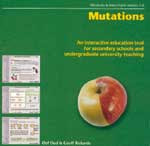
Mutations - Mutations - changes to the gene make-up of an organism - are hugely important. They are responsible for all the genetic variation in humans and other species thus allowing evolutionary changes to take place. Mutations is a comprehensive program in which the types, origins and consequences of both gene (DNA) and chromosome mutations are introduced.
Arthropods of Economic Importance Diaspididae of the World
Yeasts of the World Morphology, physiology, sequences and identification
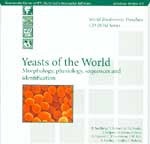
Yeasts are not only essential for the production of bread, beer and wine, but also play a major role in many more modern industrial processes, such as the production of enzymes, pigments, antioxydants etc. Moreover many yeasts are important as human pathogens, or as spoilage organisms in the food industry.
Interactive Guide to Mushrooms and other Fungi
Harmful Marine Dinoflagellates
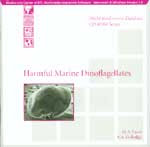
This treatise represents a comprehensive, up-to-date multifunctional dinoflagellate identification database featuring information on 69 species of harmful marine dinoflagellates and associated species present in the world's oceans. This database includes 44 toxin-producing species, brevetoxins, saxitoxins and ciguatoxins, and seven nuisance species that produce 'red tides' often resulting in massive sea life mortalities. In addition to the species description, information is available on the morphology, reproduction, ecology, toxicity, and habitat and locality for each species. A comprehensive glossary of more than 120 related scientific terms, and an extensive literature reference collection containing about 500 citations is included. There are nearly 600 figures illustrating every species via scanning electron micrographs (60%), light micrographs 120%), and/or line drawings (20%). The matrix-based identification key allows for multiple entry of characters to facilitate fast and effective diagnosis of a given species.
Fishes of the North-eastern Atlantic and the Mediterranean
Lemurs of Madagascar and the Comoros
DNA and Proteins
Arthropods of Economic Importance Agromyzidae of the World

The Agromyzidae (mining flies) are a highly diverse dipteran family of exclusively phytophagous species. The world fauna consists of about 2,750 species. Of these, some 110 species are known to occur on cultivated crops. A number of species are of particular importance, especially Liriomyza and Ophiomya.
Chironomidae Larvae Key to the Higher Taxa and Species of the Lowlands of Northwestern Europe
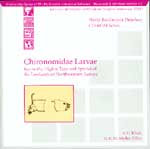
The Chironomidae form a cosmopolitan family of small nematocerous flies represented by some 1,300 species in the West Palaearctic Region. Chironomid larvae are widely distributed and the vast majority have aquatic juvenile stages which, on average, comprise one third of the invertebrate species in freshwater habitats. This usual abundance, and the fact that a number of species are pollution-tolerant, make chironomidae ideal indicator species in monitoring the quality of surface waters.
Flora Malesiana: Orchids of the Philippines Volume 1
Birds of Europe 'The handy birding tool'
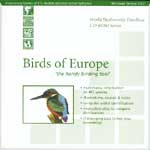
Compiled by European ornithologists, Birds of Europe is a comprehensive source of information on 447 bird species. Detailed descriptions, full colour illustrations, sound recordings of birdcalls, pictures of eggs, video clips, and interactive maps depicting the summer, year-round and winter distribution.



